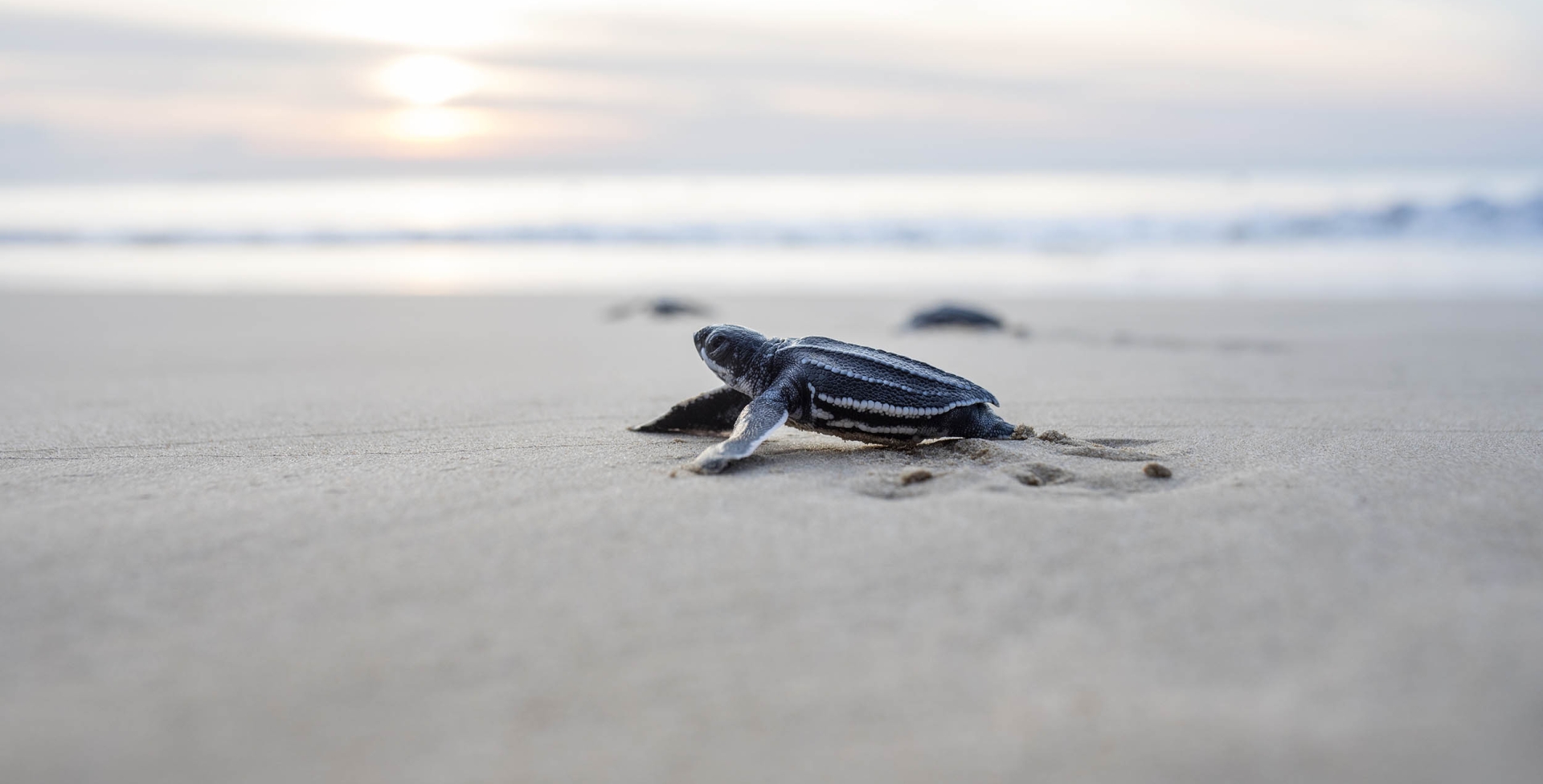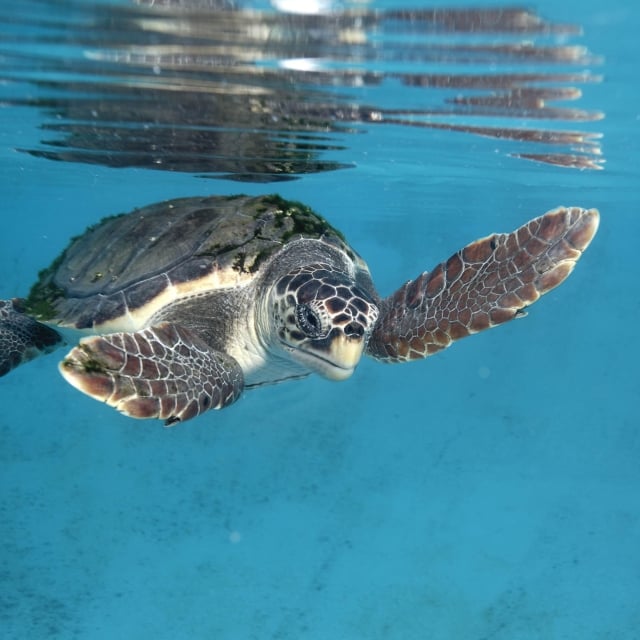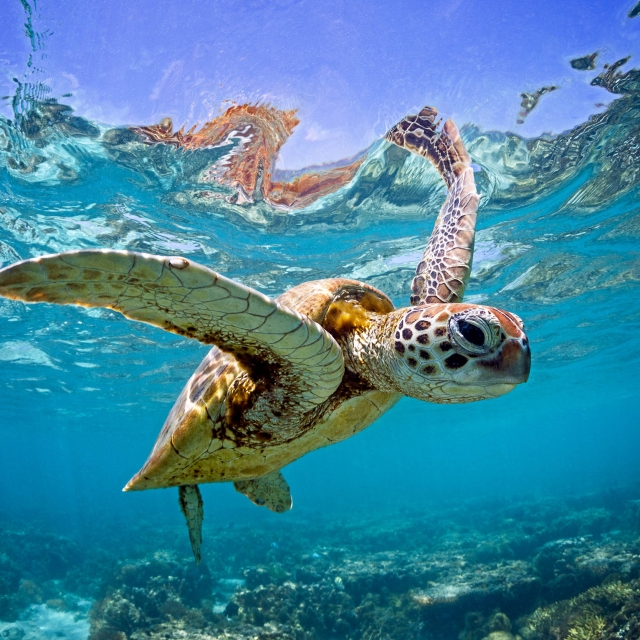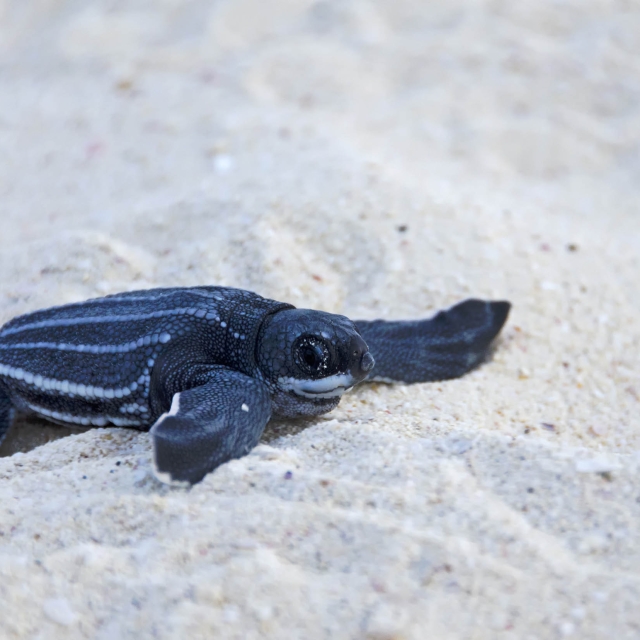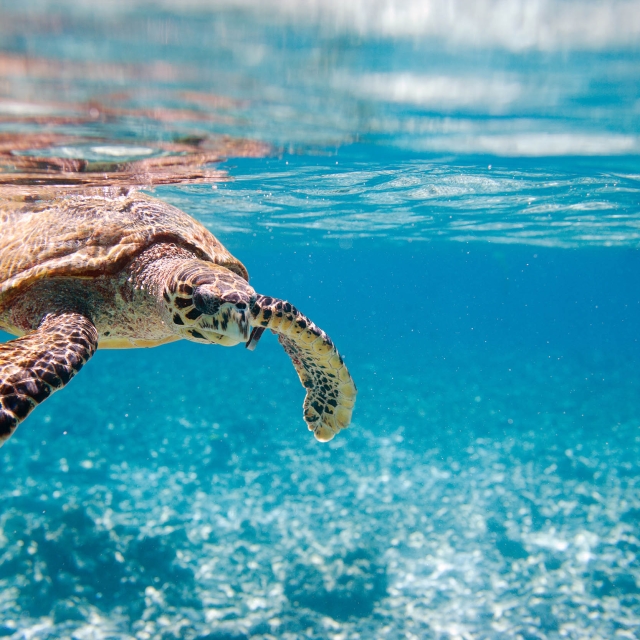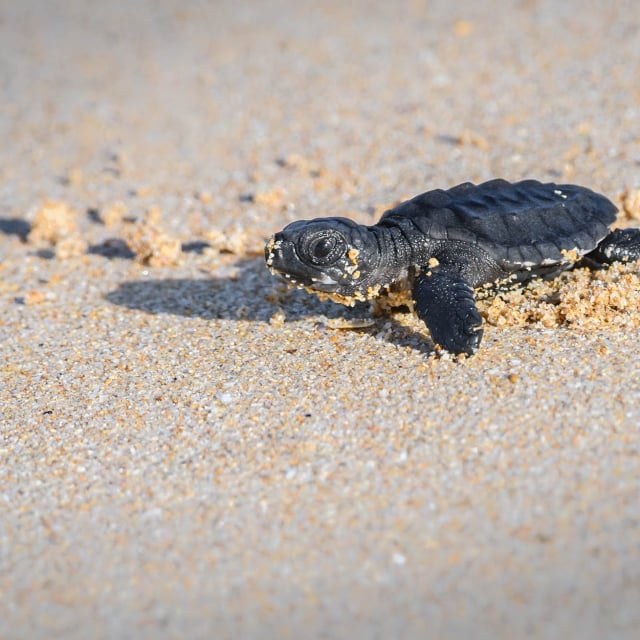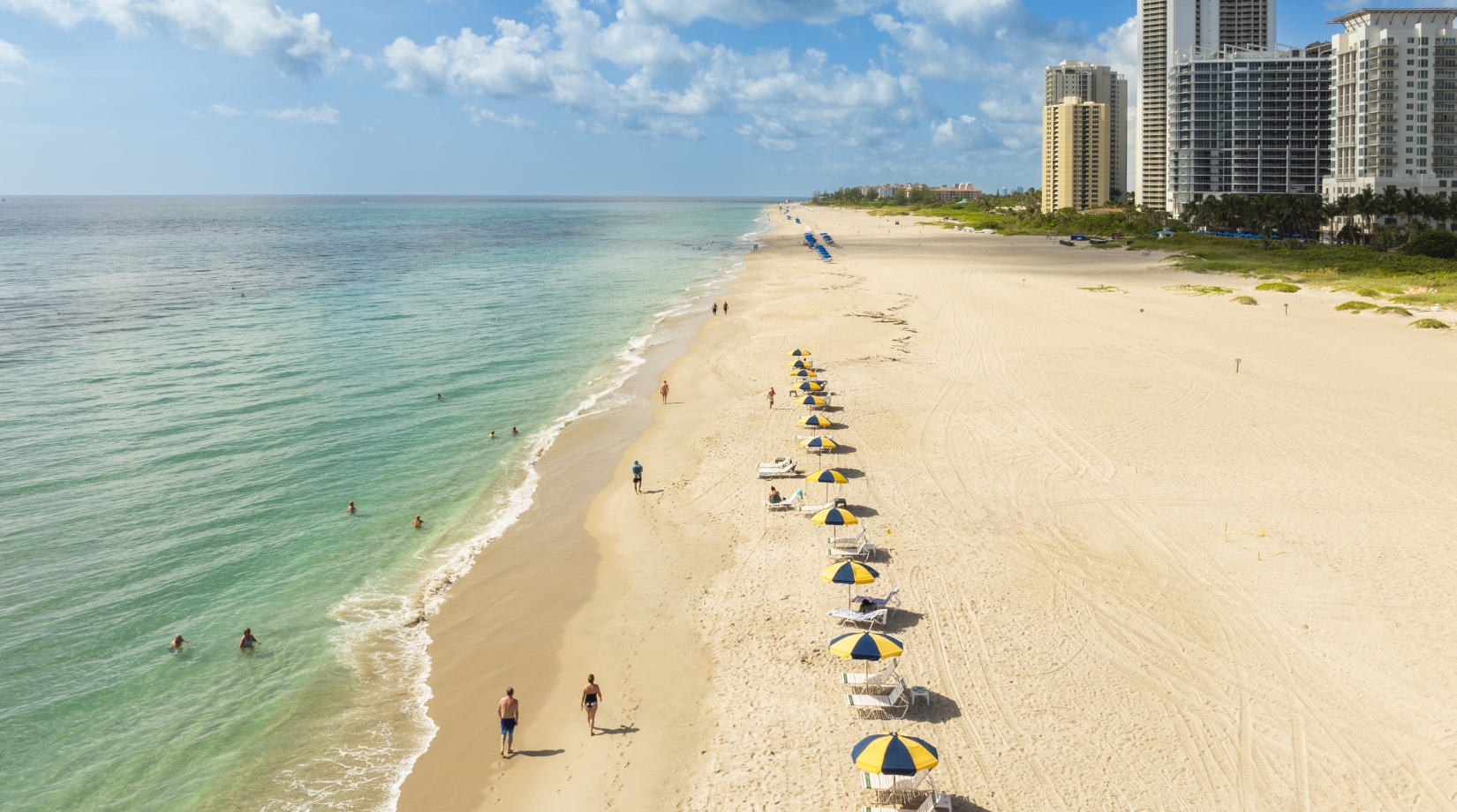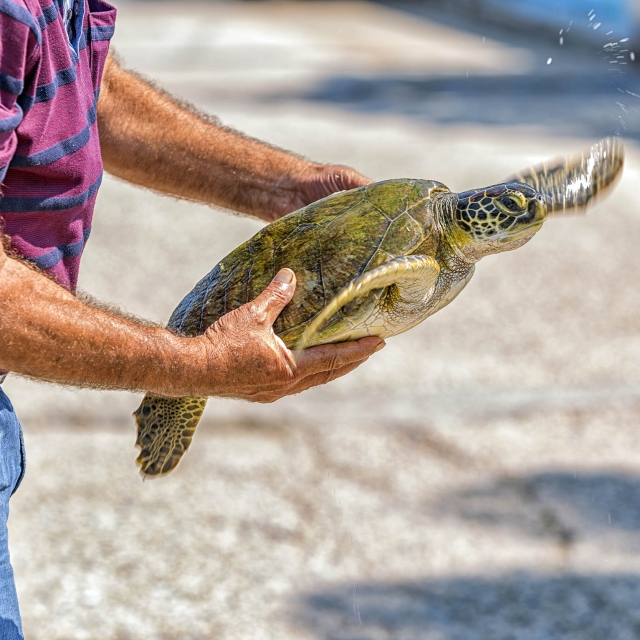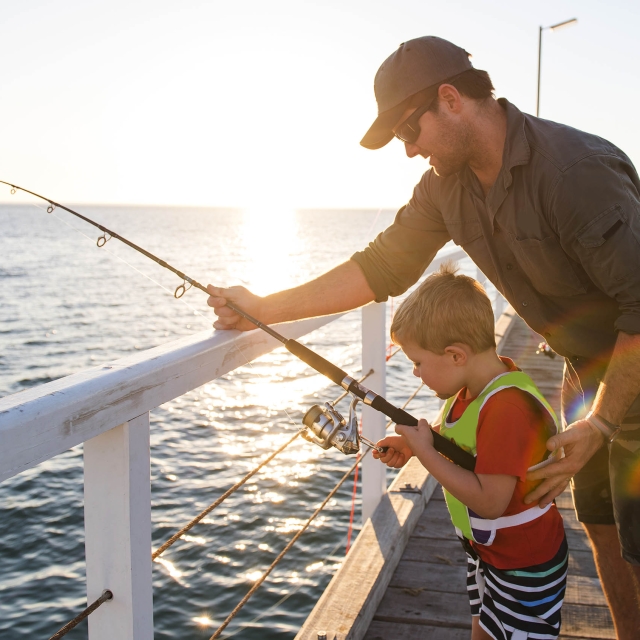An Island Retreat for All
Did you know Palm Beach is one of the largest sea turtle nesting sites in the world? Each year from March 1 through October 31, hundreds of endangered turtles find a safe haven on our beaches and surrounding waters. Get to know more about these majestic creatures and how we can best share the island with our sea turtle residents.
The Turtle
Nesting Season
During the turtle nesting season from March 1 through October 31, there are a number of simple steps we follow to help take care of our special seasonal residents.
(Please note: Due to turtle nesting season, bonfires and other events will not be permitted from March through October.)
- Keep your distance and never approach or touch a nesting sea turtle. Touching or shining lights may cause her not to lay eggs or disturb her, affecting how well she covers and camouflages the nest. Please refrain from flash photography.
- Let hatchlings emerge. If you see hatchlings on the beach, allow them to crawl to the ocean on their own. Do not remove or dig hatchlings out of a nest.
- Enter the beach at designated access points, and avoid walking on the dunes or beach vegetation to protect sea turtle nests.
- Keep your room lights off while not in use, and close your room blinds at night to avoid adding to the overall glow of the sky.
- Don’t litter. Properly throw trash away so that it doesn’t blow into the water or become an obstacle for a sea turtle.
- Be aware when digging and only dig holes below the high-tide line.

